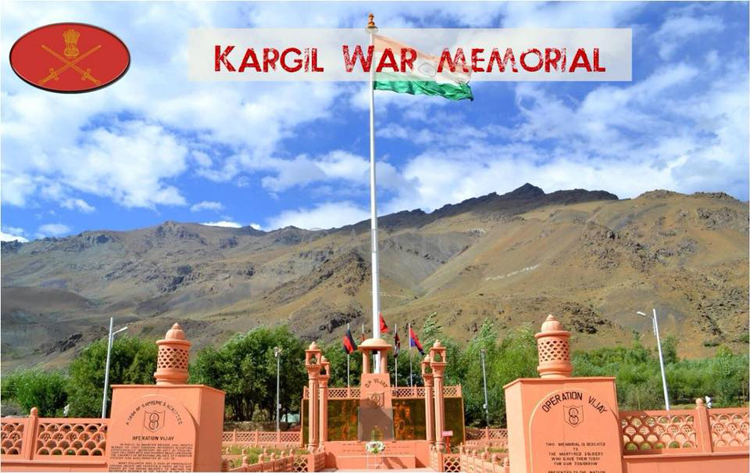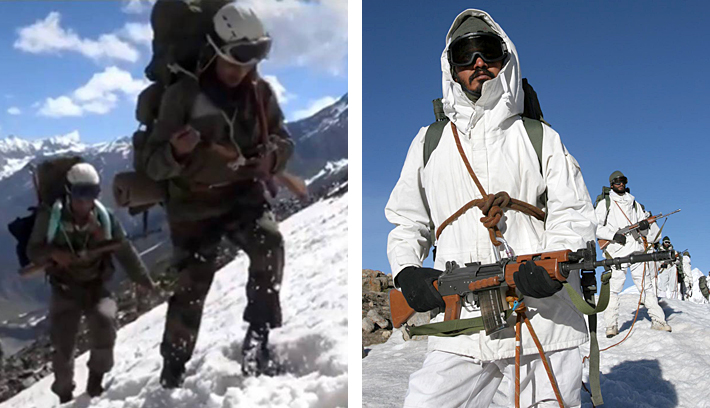INDIAN ARMED FORCES CHIEFS ON OUR RELENTLESS AND FOCUSED PUBLISHING EFFORTS

The insightful articles, inspiring narrations and analytical perspectives presented by the Editorial Team, establish an alluring connect with the reader. My compliments and best wishes to SP Guide Publications.

"Over the past 60 years, the growth of SP Guide Publications has mirrored the rising stature of Indian Navy. Its well-researched and informative magazines on Defence and Aerospace sector have served to shape an educated opinion of our military personnel, policy makers and the public alike. I wish SP's Publication team continued success, fair winds and following seas in all future endeavour!"

Since, its inception in 1964, SP Guide Publications has consistently demonstrated commitment to high-quality journalism in the aerospace and defence sectors, earning a well-deserved reputation as Asia's largest media house in this domain. I wish SP Guide Publications continued success in its pursuit of excellence.
- Operation Sindoor: Resolute yet Restrained
- India’s Operation Sindoor Sends a Clear Message to Terror and the World – ‘ZERO TOLERANCE’
- Japan and India set forth a defence cooperation consultancy framework, talks on tank and jet engines
- Terrorist Attack in Pahalgam in Kashmir: Unfolding a long surgical war against PAK
- Lt General Pratik Sharma takes over Command of Indian Army's Northern Command
25 Years Since Kargil Conflict
The Silver Jubilee of the Kargil Conflict must make us look back and seriously examine what lessons we need to draw and act upon to ensure our National Security
 |
The Author is Former Director General of Information Systems and A Special Forces Veteran, Indian Army |

2024 is the Silver Jubilee year of the 1999 Kargil Conflict. July 26 is celebrated as the 'Kargil Diwas' to rekindle the pride and valour of the soldiers who took part in 'Operation Vijay'. The extent of Pakistani intrusions spanned the heights of lower Mushkoh Valley, along the Marpo La ridgeline in Dras, in Kaksar near Kargil, in the Batalik Sector east of the Indus River, on the heights above the Chorbat La sector where the LoC turns north and in the Turtuk sector south of the Siachen area. The brain behind the intrusions was General Pervez Musharraf, then Pakistani Army Chief.
According to one source, Musharraf had been planning this when serving as a Brigadier at Skardu. As a Lt General Musharraf gave a presentation to Pakistan's defence ministry that Pakistan must capture J&K for its water sources since the per capita availability of water in Pakistan had gone down drastically since independence.
2024 is the Silver Jubilee year of the 1999 Kargil Conflict. July 26 is celebrated as the 'Kargil Diwas' to rekindle the pride and valour of the soldiers who took part in 'Operation Vijay'
Pakistan used units of the Northern Light Infantry (NLI) and the SSG for the Kargil intrusion while projecting they were freedom fighters for liberating J&K. The lie was caught when R&AW intercepted Musharraf's telephone conversation from Beijing to his deputy in Pakistan. R&AW had used a foreign source to tap the telephone conversation but after the intercept was made public, the source dried up.
On May 28, 2024, former Pakistan Prime Minister Nawaz Sharif admitted that Islamabad had "violated" an agreement with India, the 'Lahore Declaration' signed by Sharif and then Indian Prime Minister Atal Bihari Vajpayee during his visit to Lahore in 1999. Musharraf was conspicuously absent when the two Prime Ministers met in Lahore. Months after the signing of the agreement, Pakistani soldiers intruded into J&K for the Kargil intrusions and occupied the winter vacated posts.

Musharraf's plan was to keep occupying the winter vacated posts of the Indian Army, keeping the intrusions hidden till the time the Srinagar-Leh and the Manali-Leh roads were closed due to heavy snows. The aim was to cut off the Indian deployments in the Siachen area north of Khardung La Pass. Capture of Siachen was to be attempted in a subsequent phase. But Musharraf's plan to keep the intrusions secret went for a six when Captain Saurabh Kalia along with five men in his patrol were captured in May 1999 and murdered after being horribly tortured. Also, a local informed the nearby army post of having seen armed Pakistanis moving around on the heights.
On May 28, 2024, former Pakistan Prime Minister Nawaz Sharif admitted that Islamabad had 'violated' an agreement with India, the 'Lahore Declaration' signed by Sharif and then Indian Prime Minister Atal Bihari Vajpayee during his visit to Lahore in 1999
What happened during the Kargil Conflict is very well known as the radio and TV brought the news into every household. Pakistan probably never imagined that the Indian Army would recover those occupied heights having little or no cover. After the extent of the intrusions were discovered, the units and subunits of the Indian Army led by brave officers assaulted and captured enemy posts in the best traditions of Naam, Namak, Nishaan and soldiers displayed unflinching loyalty and adherence to orders.
Equipment state of any military being no secret, Musharraf would have been surprised that our artillery could cannibalise 100 Bofors guns that played merry hell in the Pakistani defences in the intrusion area that again had little cover. The helicopters (both Army Aviation and Air Force) rose to the occasion and the Air Force eventually improvised laser guided bombs that effectively damaged enemy logistics bases and supply chains.

The narratives of bravery and valour are well known, some turned into epic movies. India suffered 527 killed in these operations whereas Pakistan did not release official figures of their side; assumed to be around 700. Musharraf continued to maintain that the infiltrators were freedom fighters and as such Indian Army buried some of their dead as per Muslim rights. A month after the conflict, a Pakistani publication disclosed that 500 bodies of NLI soldiers were unceremoniously dumped at their doorsteps in the dead of night – a terrible shame. Later, Musharraf regularized the NLI into the Pakistan Army.
India still doesn't have a national security strategy and we project the image of a soft state in the absence of a pro-active politico-military strategy both against Pakistan and China
The Silver Jubilee of the Kargil Conflict must make us look back and seriously examine what lessons we need to draw and act upon -
Surveillance and Intelligence
- The fact that Pakistan moved such large forces stealthily beyond Skardu without the R&AW and the Aviation Research Centre (ARC) having any inkling speaks poorly for these organisations. In 2020, it was discovered that China had developed a new road 5-km short of Galwan – unknown to R&AW, NTRO and ARC.
- The infantry will always be short of manpower for patrolling along the ridgelines or sending individual patrols to heights in such high altitude terrain.
- Helicopters on surveillance mission keep out of the enemy missile range and a well camouflaged enemy, seizing movement on sighting/hearing helicopter, makes detection difficult.
- We are yet to ensure 24x7 satellite coverage of the borders, as also a drone surveillance grid.
Winter Vacated Posts
For troops trained in high altitude warfare, it is easy to occupy winter vacated posts of the enemy, still easier if the posts have been vacated early. That is what Pakistan did to effect large scale intrusions. For the same reason, no post was allowed to be winter vacated in the adjacent Siachen Brigade Sector during that period.

Equipment Shortages
In 1999, the Indian Army had huge equipment shortages. Military modernisation remains a chimera even today with the yearly defence budget allocations remaining continuously below 2 per cent of the GDP. This is all the more ironic with our economy at $5 trillion. China's defence budget this year is $231 billion (increased 7.2 per cent from 2023) compared to India's defence allocation of Rs 6.21 lakh crore (approx $75 billion) and China is profiting $100 billion annually through bilateral trade with India, which helps modernise the PLA.
Lack of Proactive Policy
India still doesn't have a national security strategy and we project the image of a soft state in the absence of a pro-active politico-military strategy both against Pakistan and China, notwithstanding the political rhetoric of taking back Pakistan occupied Kashmir (POK) and Aksai Chin. The ''surgical strike' and standoff Balakot bombing in past 10 years were “reactive political compulsions” having suffered heavily at the hands of Pakistani terrorists at Uri and Pulwama respectively. Besides, Pakistan engineered several terrorist attacks in India during this period. So, the initiative remains with the enemy and that is why Musharraf said there will be many more Kargils, like the one affected by China in Eastern Ladakh during 2020.
Conclusion
There are many more lessons that can be drawn from the Kargil conflict, for example, vital importance of the man-behind-the-machine. This needs to be understood by policy makers who want to do away with the regimental system of the Army on the pretext of it being “colonial”, which it is not. Also, the Agniveer system adversely affects the combat edge. Regular recruitment must be revived to retain combat effectiveness.
Finally, economic rise would not make India a super power unless the military power is built up considering the role India must play worldwide to be recognised as a superpower. We need a holistic approach to build requisite military strength.





